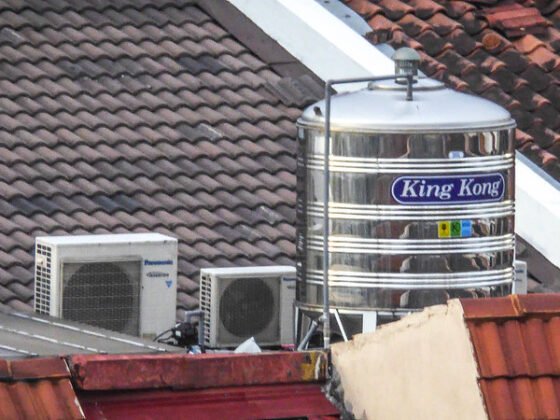Table of Contents Show
The purchase of almost all homes in the United States is financed through mortgages. The type of mortgage and the lender you get it from determines its interest rate, the type of home you can buy, qualification requirements, and more.

The most common types of mortgages are conventional and FHA loans. Although they both do the same thing, i.e., help home buyers purchase homes, they are very different.
FHA VCs. Conventional Loans: What are They?
FHA loans are referred to as such because they are backed and insured by the Federal Housing Commission (FHA). An FHA-approved lender issues them, and the FHA will pay the remainder in case of foreclosure. The payment happens after a borrower’s home is sold in pre-foreclosure when they cannot sell it or pay arrears.
FHA loans are typically easier to qualify for, especially for people who may have a problem getting approved for a mortgage, such as first-time home buyers. They also have lower down payment requirements.
The Federal Government does not guarantee or insure conventional loans. The home becomes their security, and the lender loans funds that are lower than or the same as the home’s value to protect their investment.
Conventional loans have much stricter lending and larger down payment requirements. Their approval process is also very strict. Private mortgage insurance is required when you deposit less than 20% of the home’s value. However, you can always ask the lender to cancel the insurance premiums once you have paid off more than 20% of the home’s value.
Loan Types
There are various types of FHA and conventional loans, and some overlap between them. Some of the common FHA loans include energy efficiency mortgages, property investment loans, rehab mortgages, construction loans, and basic home mortgages. You can click here to learn more about FHA Loans, including their requirements and limits.
For conventional loans, we have:
- Conforming and non-conforming loans: The former is less than the maximum amount set by the Federal Housing finance agency, and the non-conforming loans are more than the loan limit set by the FHFA.
- Fixed and adjustable-rate conventional loans: Fixed-rate loans have a fixed interest rate that does not change throughout the life of a loan. Adjustable-rate loans have changing interest rates which go up and down depending on various factors.
- Low-down-payment loans: These loans have low-interest rates of 3% or 5%. Home buyers can also apply for zero down payment loans, but these are much harder to find.
- Renovation loans: These apply to fixer-uppers and those who have a hard time finding a home within their budget range.
Read Also:
Credit Scores and Down Payments
The differences between FHA and conventional loans emerge when you start looking at the eligibility requirements, such as the credit score and the downpayment required. While they are easier to qualify for, you still need a credit score of 580 to be approved for an FHA loan. That said, some lenders will approve lenders with a credit score of 500, although that is rare and typically requires a 10% downpayment.
Conventional mortgages approve people with credit scores of 620 and over. Lenders also approve mortgages with a 3% downpayment, but you still need to pay private mortgage insurance unless you increase this to 20%.
The downpayment limit can go up to 5% if you make less than 80% of the medium income for your area, 10% for second homes, and 15% for multiple-family dwellings. Remember that the credit scores and downpayment requirements will change depending on the lender. You are also more likely to get approved for FHA and conventional loans with a high credit score.
Mortgage Insurance
Mortgage insurance differs from other types of insurance because, instead of protecting you, it protects the lender so they can recoup their money in case of a default. As discussed, conventional loan lenders require mortgage insurance for down payments of less than 20%.
However, everyone borrowing FHA loans is required to have mortgage insurance regardless of their downpayment amount. The insurance premiums can last up to 11 years if you pay more than a 10% downpayment or until you repay the loan if you paid less than a 10% downpayment.
The mortgage insurance amount is calculated by comparing the amount you borrow from the lender to the value of the home, known as the loan-to-value ratio. The insurance amount for a conventional loan is around 0.03% and is about 0.75% for an FHA mortgage.
Debt-to-income Ratio
This number is very important in determining if you hold a lot of debt compared to your income and whether you can service a loan, of which a mortgage is one. Lenders will look at your debt-to-income ratio during the approval process.
To get this ratio:
- Add up all your expenses including all the loan payments you are currently making.
- Total up all the income you are getting.
- Divide the total expenses by the total income and multiply that by 100.
If you want an FHA loan, you should have a debt-to-income ratio of less than 45% if you have a credit score of 580 or lower. With a conventional loan, it should be 50% or lower.
Property Standards
Lenders also consider the intended use and the condition of the property to be financed. FHA appraisals are stricter, assessing the home’s value, how well it has followed local building codes, safety, and the quality of the construction.
Conventional loan appraisals typically consider the market value of the property. These strict appraisals ensure the lender can recoup their money in case of a default, and they have to sell the house.
The quality and value of a home are typically evaluated during a home inspection. Hiring a home inspector is optional, but they may unearth potential issues that show the asking price might be too high.
These inspections are crucial for FHA loans because you are required to use the home as your primary residence once the mortgage is approved. Conventional loans, on the other hand, can be used to finance primary residences, vacation homes as well as investment properties.
FHA and conventional loans have advantages and disadvantages, allowing you to choose the best option for you and your needs. FHA loans are easier to qualify for and require a smaller downpayment than conventional loans. Conversely, conventional loans can be used for investments and thus are an excellent tool for building wealth.









